In recent years, homeowners looking to add a unique touch to their landscapes have turned to clover lawns as an alternative to traditional grass. While this trend has gained popularity for its undeniable aesthetic appeal, it is crucial for individuals considering this option to be aware of both the advantages and disadvantages that come with cultivating a clover lawn. Let’s get started discussing all of the pros and cons of clover lawns!
What is a Clover Lawn?
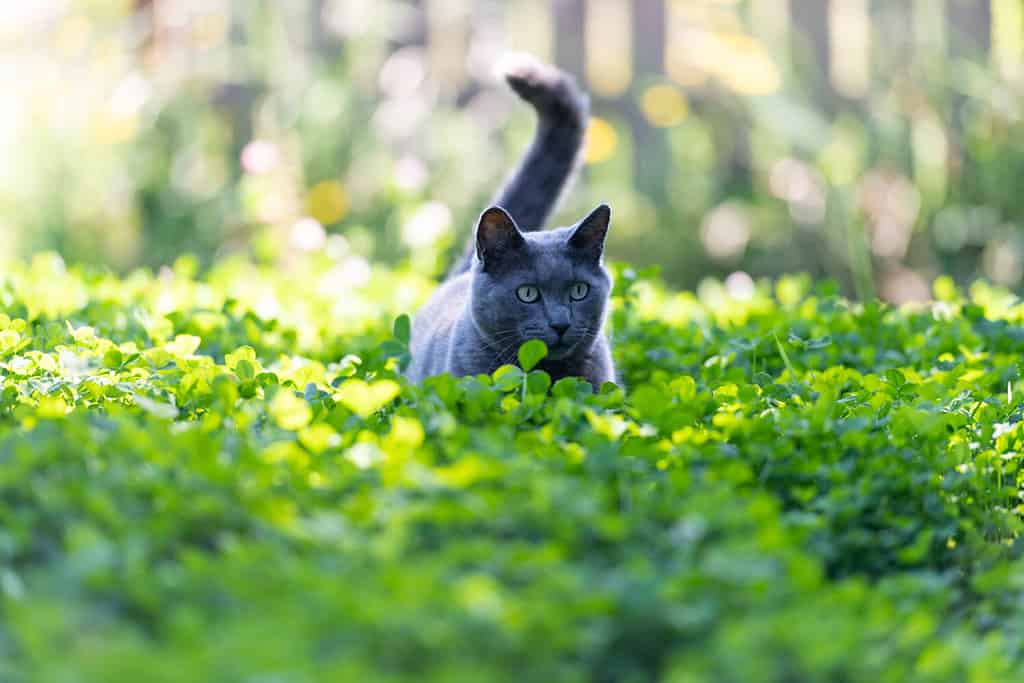
Lying in a sunny patch of clover feels soft and smells sweet and green.
©Anna Hoychuk/Shutterstock.com
A clover lawn, gaining popularity for its environmental benefits and aesthetic appeal, refers to a lawn primarily composed of various species of clover instead of traditional grass. This alternative approach offers numerous advantages worth considering.
Clovers are known for their nitrogen-fixing abilities, enhancing soil fertility by converting atmospheric nitrogen into a usable form. As they grow, these plants release nitrogen compounds that enrich the surrounding environment naturally. In addition to reducing the need for synthetic fertilizers, this process fosters healthier plant growth while minimizing water requirements.
When it comes to selecting the ideal clover variety for your lawn, consider two common options: white clover (Trifolium repens) and Dutch clover (Trifolium hybridum). White clover thrives in sunny conditions but can tolerate partial shade as well. On the other hand, Dutch clover displays better adaptability to shady areas.
Both types exhibit low-growing habits and delicate flowers adored by pollinators like bees and butterflies. Moreover, their dense foliage suppresses weed growth naturally without relying on chemical herbicides commonly associated with conventional lawns.
Embracing a vibrant green hue year-round while providing ecological benefits such as reduced maintenance needs and increased biodiversity, a flourishing clover lawn is an enticing option for eco-conscious homeowners seeking sustainable landscaping alternatives.
The Pros of Clover Lawns
There are many pros and cons of a clover lawn. Here is a list of the benefits below.
Stays Green All Summer
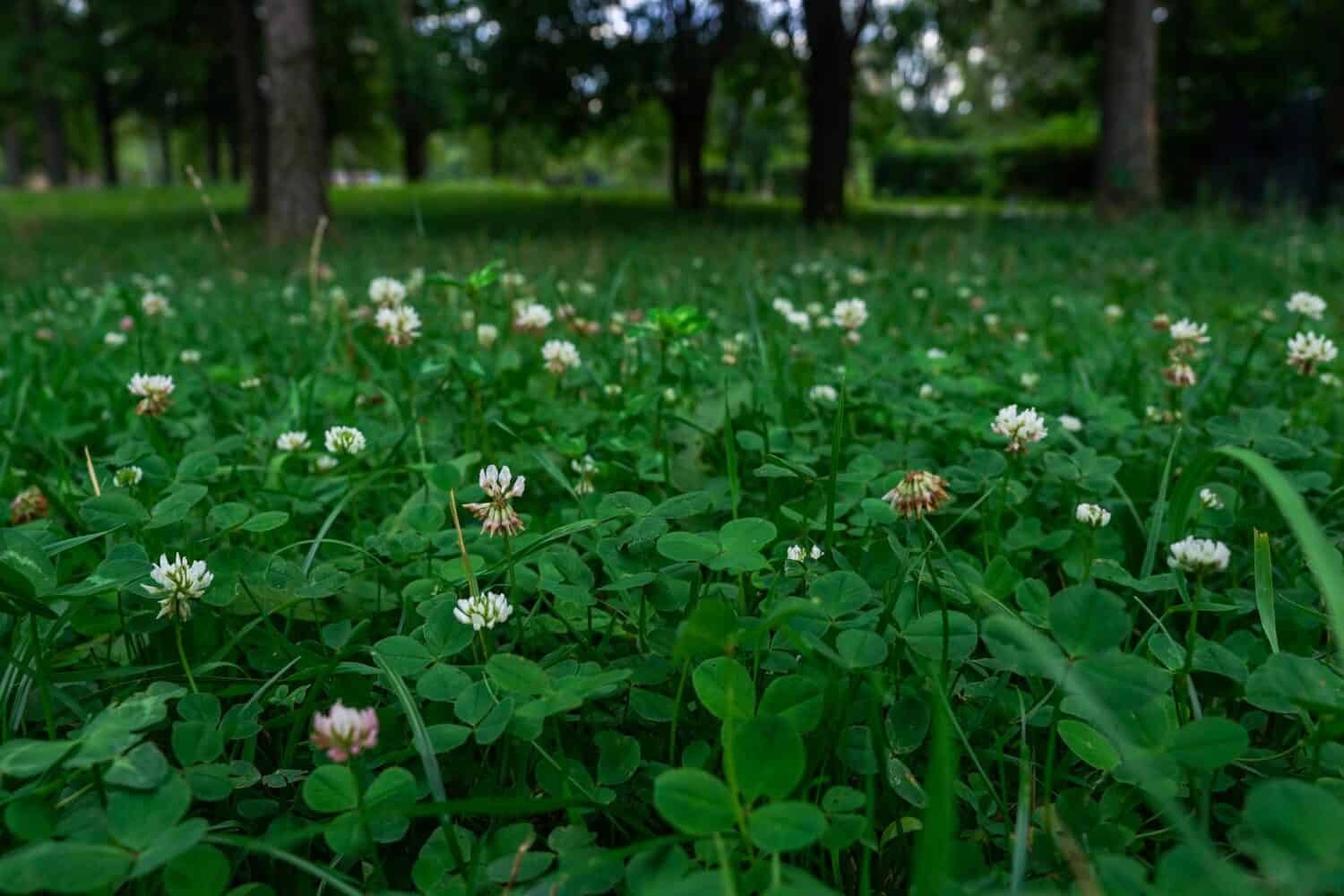
Clover lawns have many pros and a few cons. One major pro is that they stay green all summer!
©Nocciola/Shutterstock.com
A clover lawn boasts several advantages, chief among them being its unrivaled ability to maintain a vibrant green hue throughout the scorching summer months in a majority of regions across the United States. With an impressive resilience to drought conditions, this trendy alternative doesn’t flinch in the face of hot weather and meager rainfall. As spring blossoms into full swing, these remarkable lawns burst forth in an exuberant display of verdancy that persists until the arrival of a brisk fall frost. And for those residing in the southern reaches of our nation, rejoice! Clover lawns continue their emerald reign even during the winter season.
Less Water
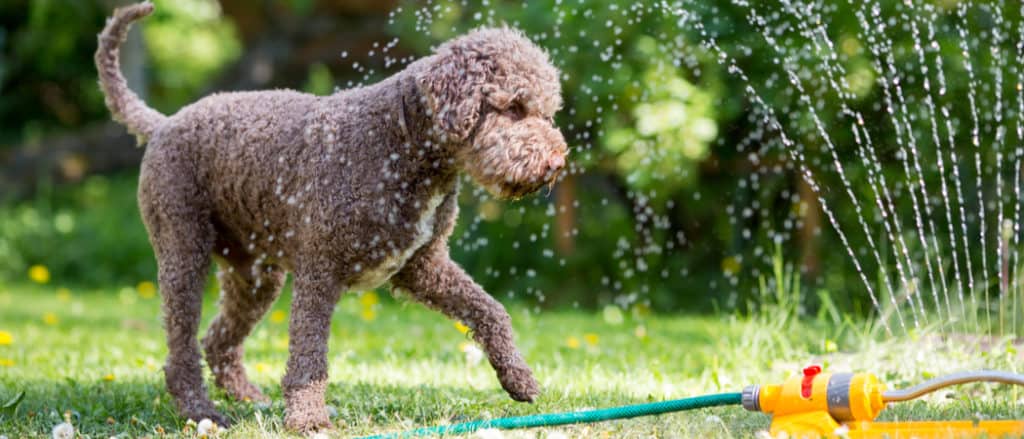
You may have to water your dog, but you won’t have to water your clover lawn.
©Jne Valokuvaus/Shutterstock.com
If you reside in regions of the United States that frequently face summer droughts, the allure of a clover lawn becomes even more enticing. One of the most remarkable benefits is its ability to thrive with minimal watering requirements. Unlike traditional grass lawns, which demand constant hydration, clover lawns can endure with just two waterings per month once they have fully developed deep roots.
This exceptional adaptability not only conserves precious water resources but also saves homeowners valuable time and effort spent on regular irrigation maintenance. By opting for a clover lawn, individuals residing in drought-prone areas can embrace an eco-friendly landscaping trend while ensuring their outdoor spaces remain lush and green throughout the scorching summer months without excessive water consumption.
Less Mowing

If you hate mowing the lawn, you will be happy to know that clover lawns do not require mowing.
©Alexey Stiop/Shutterstock.com
Unlike grass, which can grow several feet high and produce unsightly seed heads if not regularly mowed, clover offers a refreshing alternative, with its maximum height reaching only eight inches. This unique characteristic makes it an attractive option for those seeking a low-maintenance lawn that requires minimal mowing.
While you have the choice to mow your clover lawn for a neater appearance, unlike traditional grass lawns, regular mowing is not necessary. Embracing this trendy look means enjoying the freedom from constant upkeep and dedicating more time to other activities or simply relishing in the beauty of your flourishing clover oasis. Whether you opt for occasional trims or let nature take its course, embracing a clover lawn promises both aesthetic appeal and reduced maintenance efforts throughout the year.
Attractive to Wildlife

Rabbits, deer, turkeys, ground squirrels, and many pollinators will flock to your clover lawn.
©Liga Gabrane/Shutterstock.com
One of the biggest pros of clover lawns is undoubtedly their beautiful flowers. These vibrant blooms not only add a touch of natural beauty to your yard but also serve as a magnet for an array of beneficial insects. Ladybugs, minute pirate bugs, parasitoid wasps, butterflies, moths, lacewings, and bees are just a few examples of the diverse insect species that you can expect to see frequenting your clover lawn. By attracting these helpful creatures, you are effectively fostering a healthier ecosystem in your own backyard.
In addition to providing habitat and food sources for beneficial insects, clover plants themselves offer numerous benefits. They have proven to be highly nutritious feed for various animals, including turkeys, ground squirrels, rabbits, and deer. For these creatures who roam your property or pass by occasionally in search of sustenance, a lush clover lawn presents an irresistible salad bar free for their browsing pleasure.
Needs No Fertilizer
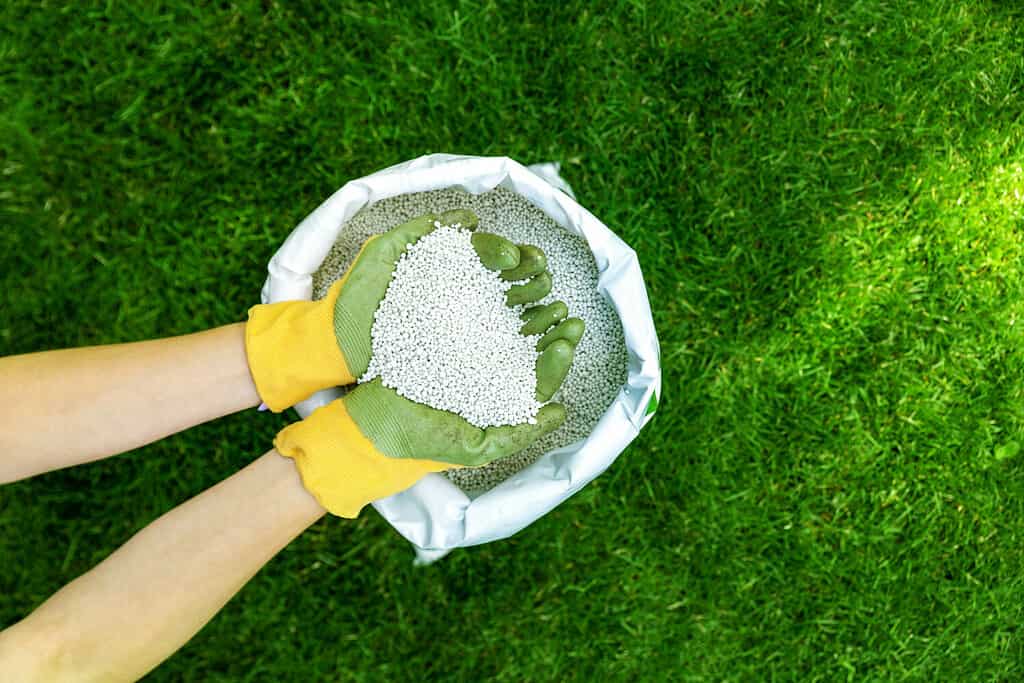
Grass needs fertilizer, but clover lawns make their own fertilizer.
©ronstik/Shutterstock.com
Clover lawns offer a multitude of pros, and one standout advantage is their ability to improve soil quality through nitrogen fixation. By harnessing the power of this process, clover effectively makes its own fertilizer. This remarkable feature proves particularly advantageous for those with gardens, shrubs, or trees growing alongside or within the clover-covered area.
How does it work? Well, as the clover plant grows and thrives, it releases nitrogen into the surrounding soil. This nutrient-rich environment not only benefits the clover itself but also provides a significant boost to nearby plants by enhancing their access to essential nutrients. So, whether you’re an avid gardener or simply appreciate lush greenery, embracing a clover lawn can have far-reaching positive impacts on your entire outdoor space.
Needs No Herbicide
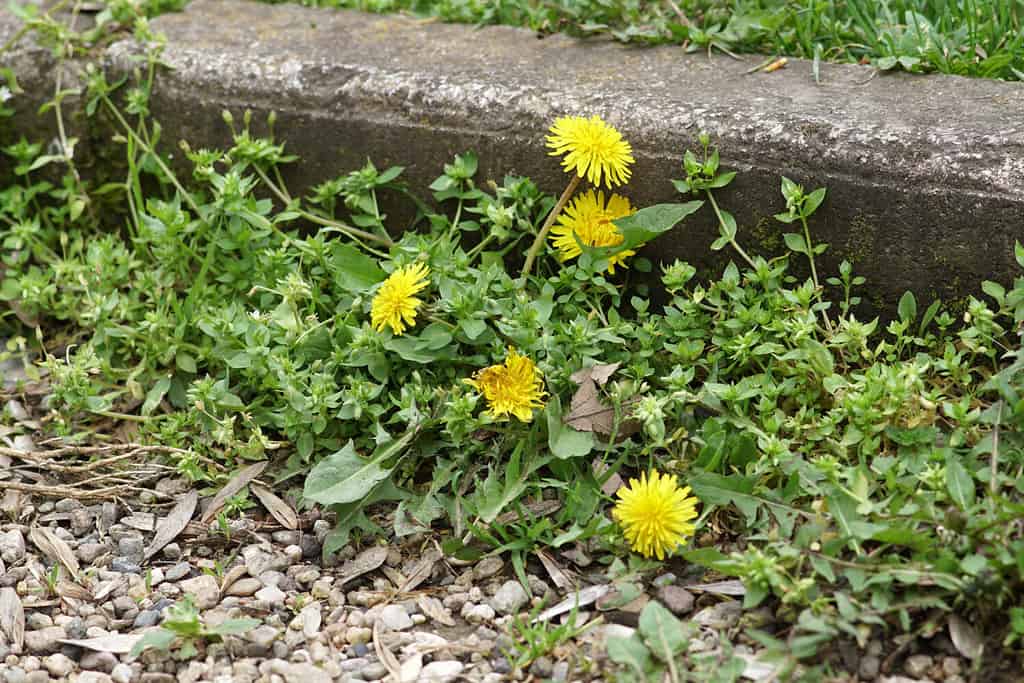
You will be happy to hear that clover lawns do not require any herbicides or pesticides.
©Aleksandar Cholanchevski/Shutterstock.com
One of the main advantages of having a clover lawn is that it eliminates the need for herbicides. Unlike traditional grass lawns, clover naturally suppresses weed growth through its dense and vigorous growth habit. The thick mat formed by clover leaves shades out potential weeds, preventing them from establishing themselves in the lawn. This not only reduces the need for potentially harmful chemical herbicides but also promotes a healthier and more sustainable approach to lawn care.
Keeps Out Weeds

One of the big pros of having a clover lawn is the fact that they remain weed-free naturally.
©Labylullaby/Shutterstock.com
One of the advantages of having a clover lawn is its ability to keep out weeds, which makes it an attractive option for those who despise the tedious task of removing unwanted plants from their pristine grass lawns. The dense mat formed by clover growth, with its compact and robust root system, provides effective competition against other weed species. This natural weed-suppressing quality minimizes the need for manual weeding or chemical interventions in maintaining a clean and vibrant lawn.
Grows in Poor Soil
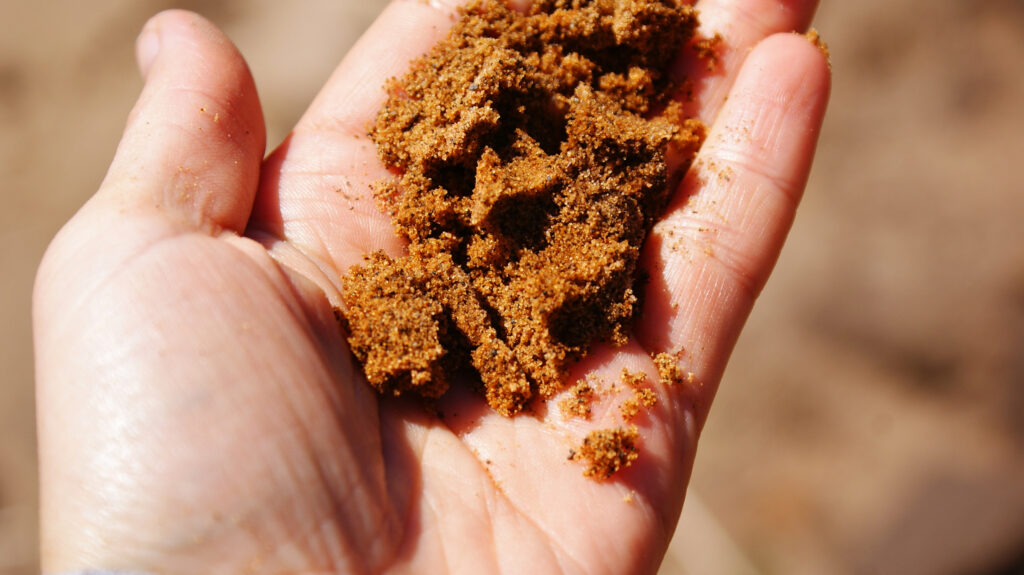
If you have sandy, rocky, or clay soil a clover lawn might be the perfect solution.
©Svetlana Akhmedova/Shutterstock.com
Clover is an excellent choice for yards with poor soil due to its remarkable adaptability. This resilient plant thrives even in compacted and poorly draining conditions, making it a perfect solution for those struggling with less-than-ideal soil quality. Clover’s ability to establish itself in such challenging environments stems from its deep-rooting nature, which helps it access nutrients and moisture effectively. By introducing clover into your yard, you can transform barren spaces into vibrant green patches without the need for extensive soil improvement measures.
Smells and Feels Nice
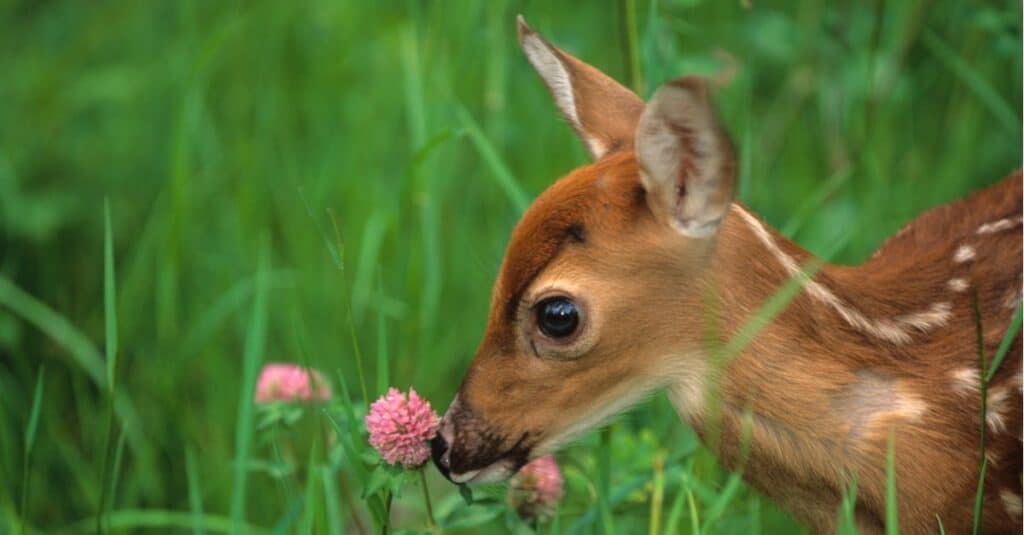
Even deer agree that clover lawns smell and taste delicious.
©iStock.com/twildlife
Walking barefoot on a clover lawn is truly a luxurious treat due to its soft, lush, and cool texture. The sensation of sinking one’s toes into the velvety carpet of clover leaves brings an unparalleled sense of comfort and relaxation.
Moreover, the experience is enhanced by the delicate fragrance emitted by both the leaves and blossoms of this resilient plant. This mild yet pleasant smell adds an element of tranquility to any outdoor space adorned with a clover lawn. Whether enjoying a leisurely stroll or simply sitting back and reveling in nature’s embrace, the inviting sweet scent further elevates the sensory pleasure provided by this trendy look.
No More Dog Stains

A clover lawn means no more unsightly dog urine patches in your grass.
©KRIACHKO OLEKSII/Shutterstock.com
One of the major advantages of having a clover lawn is its resilience to “dog patches.” Unlike traditional grasses, which can become discolored and damaged due to dog urine, clover remains green and lush regardless. This is because clover has a unique ability to withstand the effects of pet waste, making it an ideal choice for dog owners who want to maintain a pristine and vibrant lawn. By opting for a clover lawn, homeowners can bid farewell to unsightly brown spots caused by their furry friends’ bathroom breaks.
Inexpensive
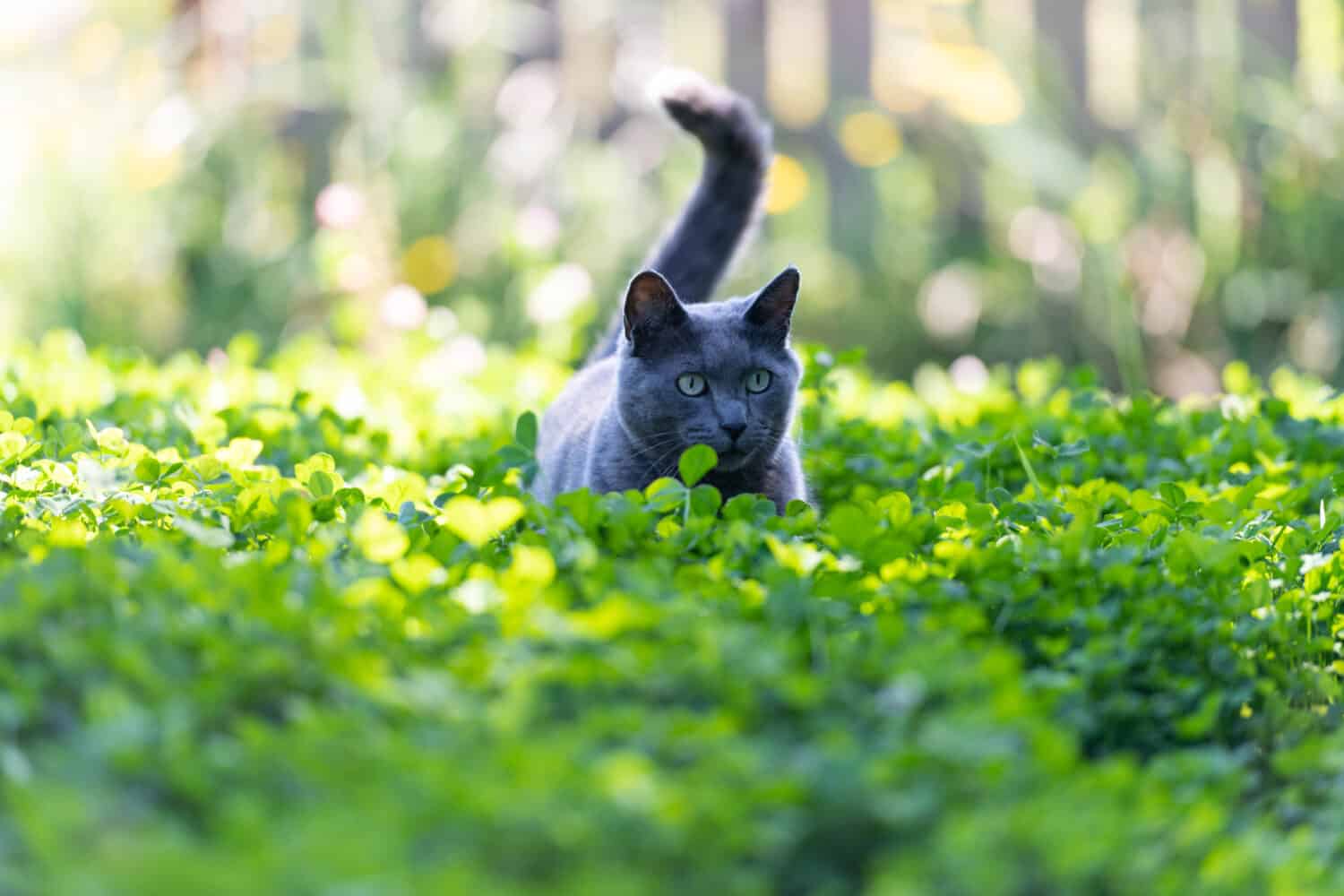
Planting clover seeds costs around four dollars for a 4,000-square-foot area.
©Anna Hoychuk/Shutterstock.com
Clover is not only an aesthetically pleasing addition to your lawn, but it also offers significant cost advantages. One of the most compelling reasons to opt for a clover lawn is its affordability. Clover seed is typically inexpensive, with an average cost of around $4 per 4000 square feet. If you have been tirelessly battling clover as a weed in your yard, embrace it and allow it to flourish. It will grant you this beautiful ground cover absolutely free of charge.
Furthermore, the financial benefits extend far beyond the initial investment in seed. By transitioning to a clover lawn, homeowners can save countless dollars on water consumption and maintenance costs. Unlike traditional lawns that often require frequent watering due to their high water needs, clover has excellent drought tolerance capabilities.
Moreover, the elimination of herbicides and fertilizers commonly used on regular lawns significantly reduces ongoing expenses associated with chemical treatments. Additionally, by getting rid of your noisy gas-powered mower, you eliminate fuel costs while contributing towards environmental sustainability.
The Cons of Clover Lawns
While the pros and cons of a clover lawn are mostly pros, there are a few drawbacks to consider. Here they are below.
Stains Clothing

One of the cons of a clover lawn is that it does stain clothing easily.
©BearFotos/Shutterstock.com
Clover, with its water-rich petals and leaves, tends to retain more moisture than grass. Consequently, the propensity of clover to stain clothing is greater compared to traditional grass lawns. This can pose a significant drawback for individuals with children who frequently engage in outdoor play activities that often result in soiled or ruined garments.
No Good for High-Traffic

High-traffic areas, like sporting fields, are not suitable for pure clover.
©iStock.com/gorodenkoff
Clover may be a trendy choice for lawns, but it does come with its limitations. One major con is that it is not durable enough to withstand heavy foot traffic or serve as the foundation for playing fields. When used on its own, clover struggles to hold up against repeated and intense human activity.
However, there is a solution to this problem. Blending clover with turfgrass can create a more resilient and robust lawn that can handle occasional heavy traffic without sacrificing its aesthetic appeal. By combining the two, homeowners can enjoy the benefits of having an eco-friendly clover lawn while still ensuring durability in areas prone to high levels of activity. This hybrid approach strikes a balance between sustainability and practicality, making it an ideal option for those seeking both beauty and functionality in their outdoor spaces.
Short Lived
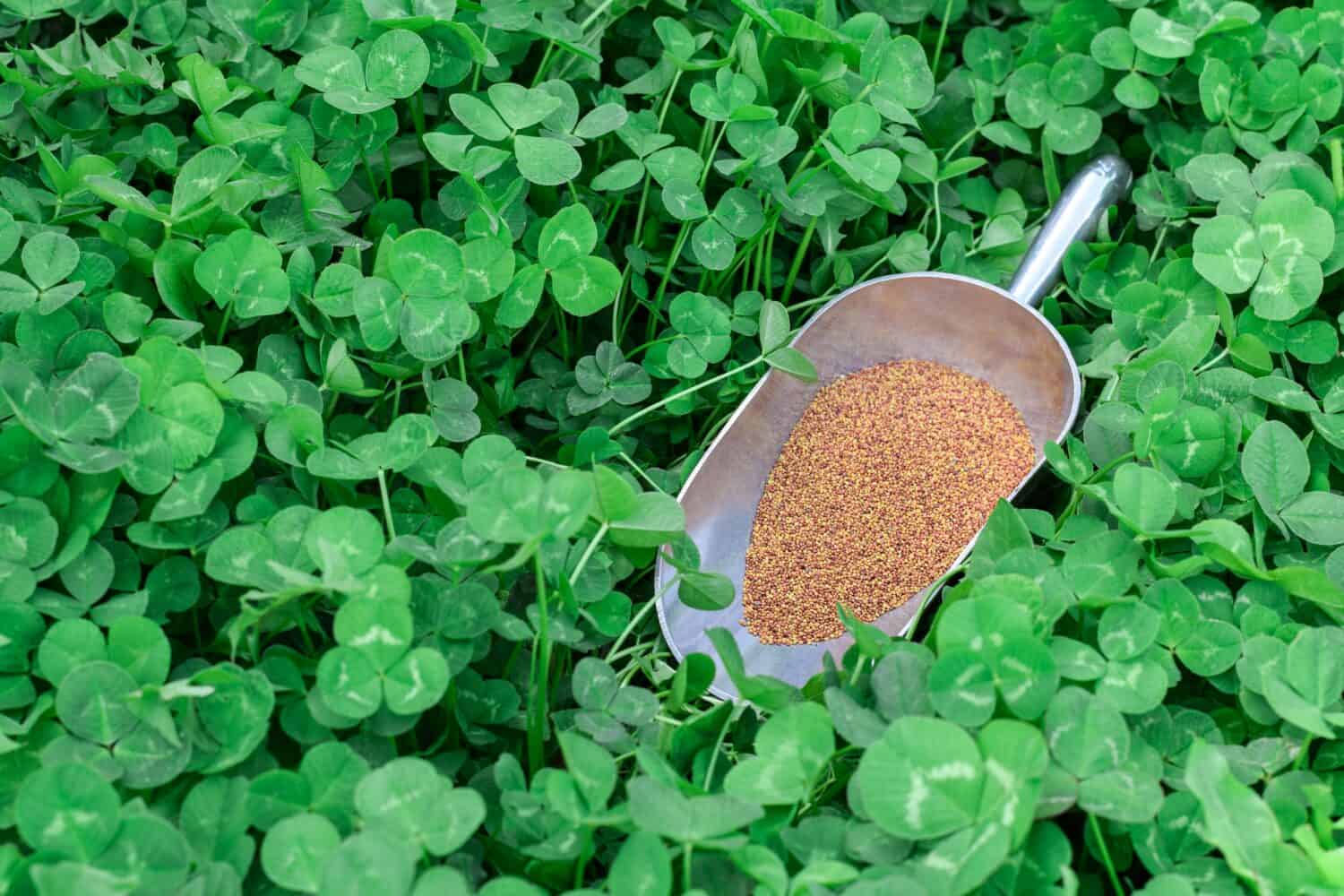
The seeds for planting clover are cheap, but you will have to re-seed every two or three years.
©JulieK2/Shutterstock.com
Clover is not a long-lived perennial plant. It does require some maintenance to ensure its longevity. For pure clover lawns, reseeding every 2-3 years is necessary to maintain an even stand of clover.
This may seem like an inconvenience at first glance, but the good news is that clover seeds are incredibly affordable. So while the need for reseeding may be seen as a drawback by some, the cost factor alleviates this concern significantly.
On the other hand, if you have a mixed grass-clover lawn, you’ll find that the clover will naturally reseed itself adequately over time without much effort on your part. As a result, maintaining a consistent presence of clover in such lawns becomes easier and less demanding compared to pure clover lawns.
Attracts Bees
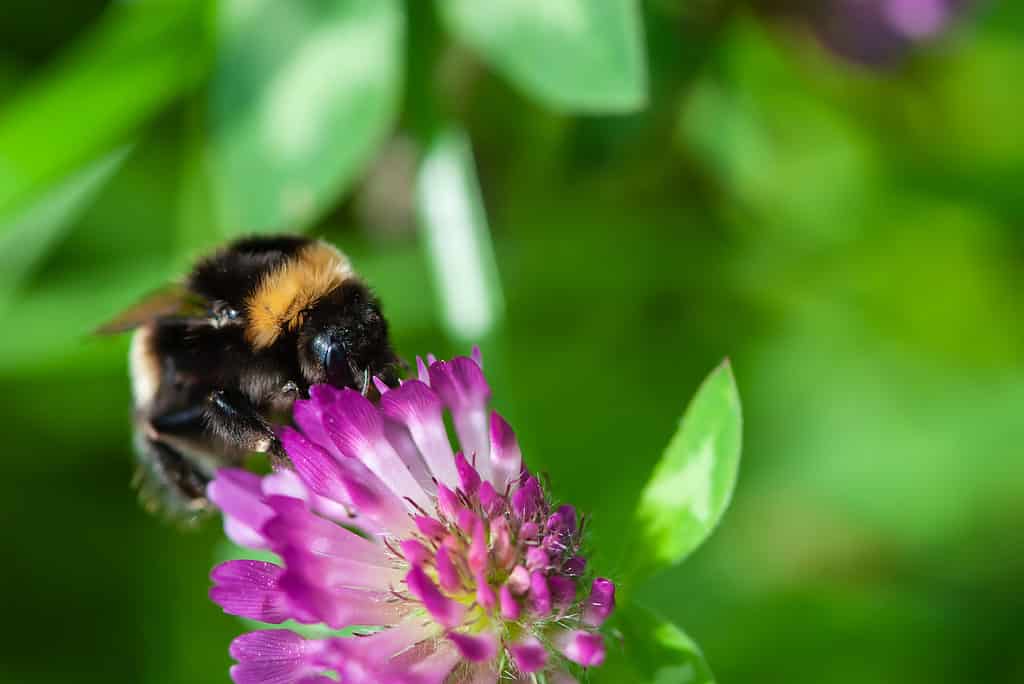
Bee allergies are a big reason not to plant a clover lawn.
©iStock.com/Tanja Nik
If someone in your home is allergic to bees, then planting a giant lawn of clover flowers might be a major no-no. The vibrant and attractive blooms can act as magnets for these buzzing insects, potentially increasing the risk of bee stings or triggering severe allergic reactions. However, if you have concerns about bees due to fear or allergies, there is a simple solution. Mow the clover before it flowers! By doing so, you can prevent the blossoms from attracting bees and ensure peace of mind for everyone in your household.
How to Plant Clover Seeds
When planting clover seeds, it’s important not to place them too deeply into the soil. Sprinkling or lightly raking them onto the surface should be enough. They prefer full sun and will grow in light shade but not as quickly. If you’re planting in a shadier area, it’s recommended to double the amount of seed used. To ensure the new plants can grow properly, keeping the newly seeded areas moist is important.
Clover Lawn Tips
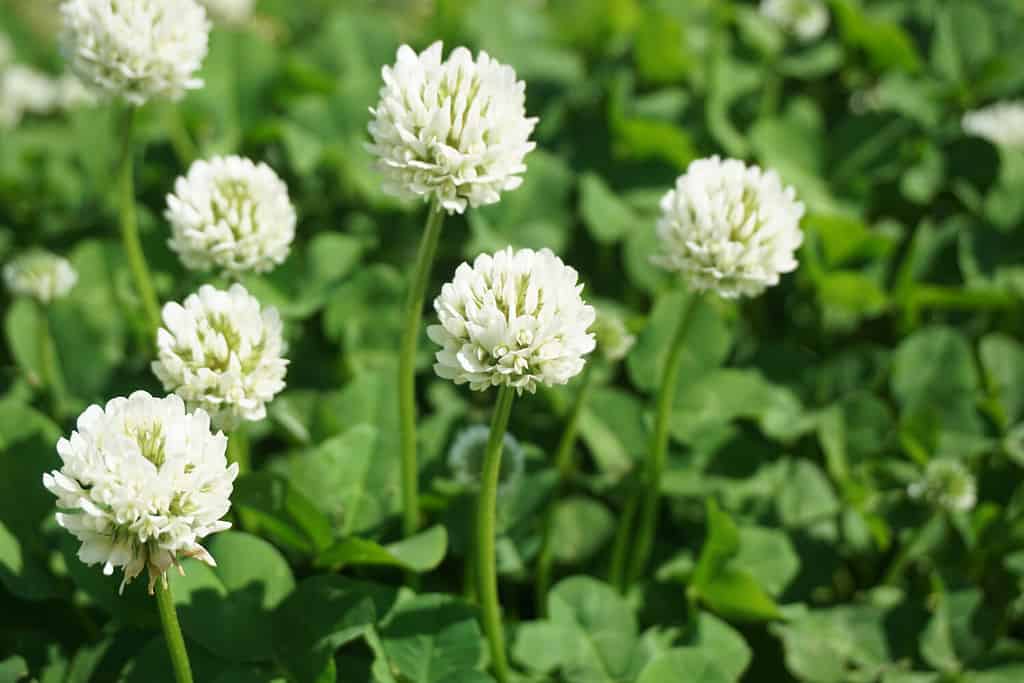
Clover seeds are easy to plant and maintain.
©mamesuke/Shutterstock.com
If you’re thinking about adding a clover lawn to your landscape, there are some pros and cons to consider. To establish a clover lawn, you can either enhance existing patches or sow the seeds during the spring or fall. To ensure an even spread of the tiny seeds, blend them with some dirt, sawdust, or sand.
If your lawn does not have clover already, you may need to add a bacterial inoculant to encourage good growth. However, if it is already present in your lawn, the inoculant is likely already present in the soil. After you have planted the seeds, water them daily with a misting attachment until the seedlings can be seen.
Maintaining a clover lawn involves setting your mower blade at 2 inches to promote the growth of the clover and suspending mowing during the summer to allow the clover to flower and seed. Regular mowing is not necessary unless you want to discourage bees from coming to the lawn.
Herbicides should never be used on a clover lawn. The clover is a short-lived perennial, so it may need to be reseeded approximately every three years in order to keep an even coverage. It could also reseed naturally, or other wild clovers may take over aging stands.
Thank you for reading! Have some feedback for us? Contact the AZ Animals editorial team.







